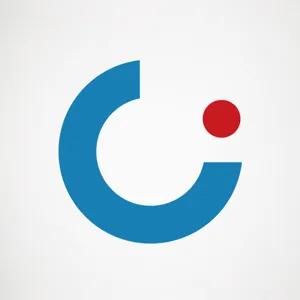Podcast Summary
From robotics to logistics: Zipline's journey: Zipline started as a robot project but pivoted to logistics to address uneven distribution and make deliveries faster, reliable, and accessible to all
The vision of teleportation in logistics, as pioneered by Zipline, goes beyond just transporting goods through autonomous drones. It's about making deliveries nearly instantaneous, reliable, and accessible to everyone, regardless of their location. Keller Clifton, Zipline's CEO, shares his journey from building molecular automata in college to becoming obsessed with robotics and logistics. He and his co-founders started with a simple robot project, Remotive, which eventually enabled them to ship products and make money. However, they didn't realize they were starting a company until they faced the challenge of unevenly distributed logistics and the impact it has on people's lives. They saw an opportunity to build a new logistics system that is automated, emission-free, faster, and serves all people equally. This vision led to the creation of Zipline, which has already made a significant impact in Rwanda by providing critical medical supplies to millions of people within a 30-minute delivery range.
Identifying a long-term problem and committing to it: Founders should focus on solving a significant, long-term problem, even if it's not initially clear what that problem is. The importance and urgency of the problem can guide decision-making and lead to a decade-long commitment to a solution.
Identifying a problem worth solving for the long-term and committing to it is crucial for building a successful startup. The founder of a logistics company shares his experience of creating robots for household use, which didn't gain traction due to the uncontrolled and unrepeatable nature of household tasks. Instead, he was inspired by the automation of warehouses and saw the potential in automating transportation outside of warehouses. This simple idea led to a decade-long commitment to solving logistical problems, starting with healthcare logistics due to its clarity for customers, easier unit economics, and regulatory approval. The founder emphasizes that they were not initially smart enough to know what they should focus on but that the importance and urgency of the problem played a significant role in their decision-making process.
Delivering Critical Medical Supplies with Autonomous Drones: A company uses drones to deliver blood to hospitals, scaling up from 150 to over 300 daily deliveries, demonstrating the potential of drone technology in healthcare logistics.
Delivering critical medical supplies, such as blood, through an autonomous drone logistics system is a complex and challenging endeavor. Despite initial skepticism, a company was able to secure a contract from the government to deliver blood to 21 hospitals, recognizing the importance of addressing the logistical nightmare of ensuring the timely delivery of various blood components with different storage requirements. The company's system allows healthcare professionals to place orders via a phone app, which are then fulfilled at distribution centers and delivered via drones. These drones use a catapult launch system and parachute delivery system, enabling them to operate in various weather conditions and deliver packages to designated "mailboxes" on the ground. The company's initial goal of 150 flights per day was once considered a pipe dream, but they have since scaled up to over 300 deliveries per day, making them the largest commercial autonomous system on earth. This innovative solution not only demonstrates the potential of drone technology in the healthcare industry, but also highlights the importance of addressing the logistical challenges that come with delivering critical medical supplies.
From physical product to complex systems: Success in tech requires a full stack approach, focusing on both physical product and complex systems, practical launch, and continuous learning from real-world experiences.
Building a successful tech company, especially in the field of robotics and autonomy, requires a full stack approach and a deep understanding of the customer's needs. The physical product, such as an autonomous airplane, is only a small part of the overall solution. Instead, the focus should be on the complex systems that run behind the scenes to make the customer experience reliable and efficient. These systems include software for air traffic control, computer vision-based preflight checks, data logging, and autonomy solutions for vehicle communication and collision avoidance. When starting out, it's essential to be practical and launch the product into the real world as soon as possible, even if it's not perfect. This approach can lead to humbling experiences and the discovery of new challenges, but it's necessary to learn and grow. Zipline, for example, started with a team of 20 people and a naive confidence in their product. They faced many challenges and setbacks but ultimately succeeded by staying focused on their practical approach and delivering a reliable service to their customers.
Assuming you're an idiot can save the day: Learning from past mistakes and assuming a humble attitude can help identify and solve major issues in product development
During the development process of building a product, especially in hardware or robotics, the issues that seem insignificant or irrelevant at the outset can ultimately cause major problems. For instance, investing heavily in redundant flight computer systems might seem crucial, but it might not be the issue that causes the most trouble. Instead, issues like data logging, maintaining inventory for various fasteners, acquiring GPS fast enough for launch, and reliability of components might surface as significant challenges. These lessons were learned the hard way by a company called Zipline, which experienced numerous failures during the first year of operation despite investing significant resources. The company's survival was due to their practical and unfancy approach, getting things into customers' hands quickly, and assuming they were idiots to learn from their mistakes. For new team members joining Zipline, the company's mantra is to assume they are idiots because customers will ultimately reveal what truly matters.
Learning from Tesla's approach, Zipline scales up with a phased autonomy implementation: Starting with a simple solution and gradually integrating advanced technology can be the most effective approach for complex industries like autonomous flight
Even in complex industries like autonomous flight, starting with a simple solution and gradually integrating advanced technology can be the most effective approach. Zipline, a company specializing in drone delivery, faced the challenge of implementing autonomy systems in their operations. Despite the seemingly easier conditions for autonomous flight compared to self-driving cars due to fewer obstacles, the autonomy problem in the air is still not solved at a human safety level. Zipline drew inspiration from Tesla's approach of launching a simple product and gradually adding advanced features. By focusing on a basic product and learning from real-world operations, Zipline was able to scale up and collect valuable data, enabling them to integrate new autonomy systems into their service network. An example of this is their new acoustic-based detect and avoid technology, which addresses the challenge of detecting other aircraft without transponders in the US airspace. By taking a phased approach, Zipline has been able to serve customers and make progress towards fully autonomous operations while continuously improving their technology.
Detecting Other Aircraft with Unconventional Methods: Zipline overcame the challenge of detecting and avoiding other aircraft without relying on transponders by developing passive acoustic detection using microphone arrays, optimizing their electric aircraft for weight and power consumption.
Zipline, a company delivering medical supplies by drone, faced the challenge of detecting and avoiding other aircraft without the right of way or relying on transponders, which have low compliance in general aviation. To solve this issue, they explored a seemingly unconventional solution: passive acoustic detection using microphone arrays. Despite initial skepticism, experiments failed to disprove the idea, leading them to invest heavily in developing this technology. They faced numerous engineering, signal processing, and machine learning challenges, but managed to collect their own data for this purpose. This innovative approach allowed Zipline to optimize their electric aircraft for weight and power consumption while ensuring safe and efficient operations in the crowded skies.
Using microphones to track aircraft: Zipline's innovative use of microphones to track aircraft beyond visual line of sight has led to expansion of operations and partnerships, making it the largest logistics network in Rwanda.
Zipline, a logistics company, used a counterintuitive approach to solve a problem by developing a system that identifies and tracks aircraft using microphones. This system, which was inspired by the accuracy of neural nets when trained on various aircraft sounds, has enabled Zipline to expand its operations beyond visual line of sight and even in clouds. The company's decision to start in Rwanda, a small, innovative, and agile public health system, led to a successful partnership that has now scaled up to a $61 million deal, making Zipline the largest logistics network in the country. The company now delivers not only medical products but also agriculture products and even ecommerce solutions. The use of microphones as a cost-effective and naturally 360-degree solution for aircraft tracking is a testament to the importance of thinking outside the box and the power of partnerships in driving innovation and growth.
Mastering engineering and operations in hardware and infrastructure companies: CEO Keller Rinaudo emphasizes the importance of expertise in engineering disciplines and operations for hardware and infrastructure companies, highlighting the potential for significant impact and competitive advantages.
Building and scaling infrastructure companies, particularly those focused on hardware, is a complex and capital-intensive process. Keller Rinaudo, the CEO of Zipline, emphasized the need for mastering various engineering disciplines and operational expertise in areas like supply chain, manufacturing, logistics, and regulatory approval. He believes that despite the challenges, hardware and infrastructure companies hold significant competitive advantages and have the potential to make a profound impact on the world. Rinaudo also expressed disappointment that the tech industry has been less focused on building physical infrastructure in recent years and expressed excitement about the renewed interest in this area. Looking ahead, Zipline is in a period of intense growth, having expanded geographically, obtained FAA certification, and signed deals with major partners like Walmart. Despite the macroeconomic challenges, the company is poised for continued expansion.
Zipline's Rapid Growth in Autonomous Delivery: Entrepreneurs should tackle ambitious projects, despite challenges, for potential world-impact and less competition. Be practical and hire a risk-tolerant team.
Zipline, a company specializing in autonomous delivery, is experiencing rapid growth due to inflation and increasing demand for efficient logistics solutions. In 2023, they expect to increase total flight volume by 400% and expand partnerships with major companies like Walmart and hospital systems. Founder Keller Rinaudo advises entrepreneurs to take on ambitious projects, even if they seem improbable, as there is less competition and the potential for world-changing impact. Despite the challenges, Rinaudo emphasizes the importance of being ruthlessly practical and hiring a team that is comfortable with risk. Zipline's success story demonstrates that taking on seemingly impossible projects can lead to significant growth and innovation in the logistics industry.
Solving Global Issues with Engineering, Tech, and Sustainable Businesses: Engineers, entrepreneurs, and operation specialists should focus on addressing global issues like malnutrition, brain stunting, reproductive health, democracy, free speech, energy, and sustainability through profitable businesses with sustainable unit economics.
The world's most pressing issues, such as childhood malnutrition, brain stunting, reproductive health for women, democracy, free speech, energy, and sustainability, require engineering, technology, and sustainable business models to be effectively addressed at a global scale. The brightest engineers, entrepreneurs, and operation specialists should consider applying their talents to solving these problems, rather than just working for large corporations to sell ads. The key to scaling these solutions is through profitable businesses with sustainable unit economics. Companies like ZipLine are proof that entrepreneurship and innovation can be powerful engines to tackle these challenges and make the world a more equal place. It's essential to understand that this approach is not about philanthropy, but about building profitable businesses that can make a significant impact on the lives of billions of people.






